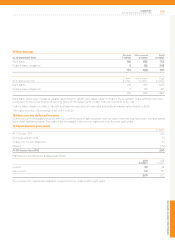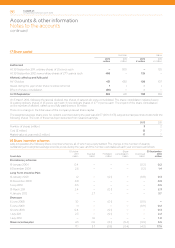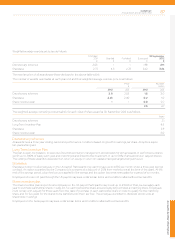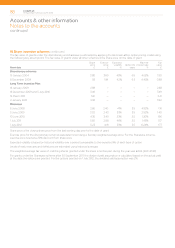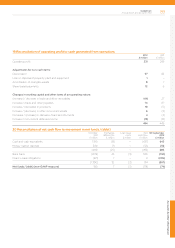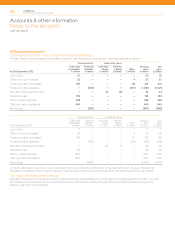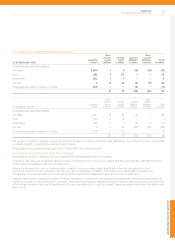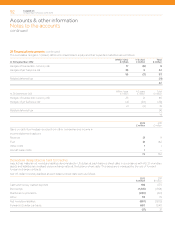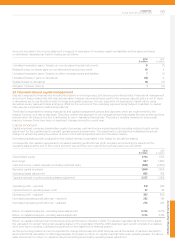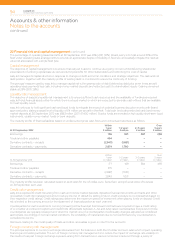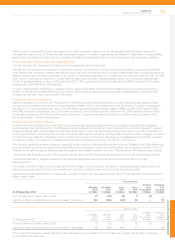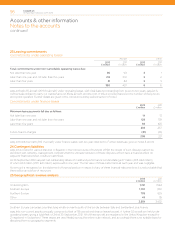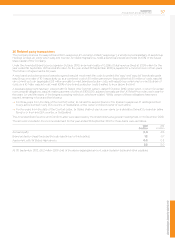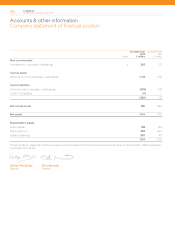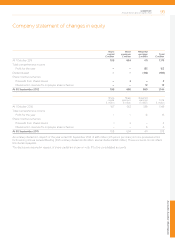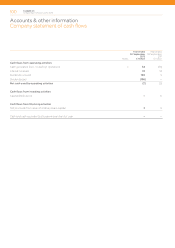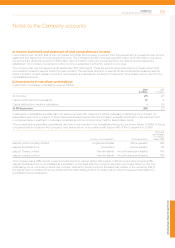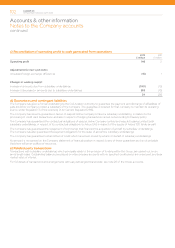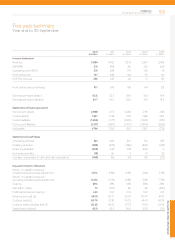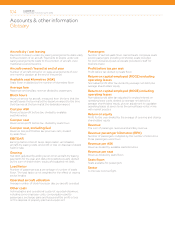EasyJet 2012 Annual Report Download - page 97
Download and view the complete annual report
Please find page 97 of the 2012 EasyJet annual report below. You can navigate through the pages in the report by either clicking on the pages listed below, or by using the keyword search tool below to find specific information within the annual report.
matching, as far as possible, receipts and payments in each individual currency. Any remaining significant anticipated exposure is
managed through the use of forward foreign exchange contracts. In addition, easyJet has substantial US dollar balance sheet liabilities,
partly offset by holding US dollar cash; any residual net liability is managed through the use of forward foreign exchange contracts.
Financing and interest rate risk management
Interest rate cash flow risk arises on floating rate borrowings and cash investments.
Interest rate risk management policy aims to provide certainty in a proportion of financing while retaining the opportunity to benefit
from interest rate reductions. Interest rate policy is used to achieve the desired mix of fixed and floating rate debt. All borrowings are at
floating interest rates repricing every three to six months. A significant proportion of US dollar loans by value are matched with US dollar
cash, with the cash being invested to coincide with the repricing of the debt. Operating leases are a mix of fixed and floating rates.
Of the 55 operating leases in place at 30 September 2012, 75% were based on fixed interest rates and 25% were based on floating
interest rates (2011: 69% fixed, 31% floating).
All debt is asset related, reflecting the capital intensive nature of the airline industry and the attractiveness of aircraft as security to
lenders. These factors are also reflected in the medium term profile of easyJet’s borrowings and operating leases. During the year
nineteen aircraft were cash acquired (2011: 11 aircraft).
Fuel price risk management
easyJet is exposed to fuel price risk. The objective of the fuel price risk management policy is to provide protection against sudden
and significant increases in jet fuel prices, thus mitigating volatility in the income statement in the short term. In order to manage the
risk exposure, forward contracts are used in line with Board approved policy to hedge between 65% and 85% (2011: between 65%
and 85%) of estimated exposures up to 12 months in advance, and to hedge between 45% and 65% (2011: between 45% and 65%)
of estimated exposures from 13 up to 24 months in advance. In exceptional market conditions, the Board may accelerate or limit
the implementation of the hedging policy.
Market risk sensitivity analysis
Financial instruments affected by market risk include borrowings, deposits, trade and other receivables, trade and other payables
and derivative financial instruments. The following analysis illustrates the sensitivity of such financial instruments to changes in relevant
foreign exchange rates, interest rates and fuel prices. It should be noted that the analysis reflects the impact on profit or loss after tax
for the year and other comprehensive income on financial instruments held at the reporting date. It does not reflect changes in revenue
or costs that may result from changing currency rates, interest rates or fuel prices. Sensitivity is calculated based on all other variables
remaining constant. The analysis is considered representative of easyJet’s exposure over the 12 month period.
The currency sensitivity analysis is based on easyJet’s foreign currency financial instruments held at each balance sheet date taking into
account forward exchange contracts that offset effects from changes in currency exchange rates. The increased sensitivity in the US
dollar and euro rate represents sterling weakening against each variable currency with the –10% sensitivity reflecting stronger sterling.
The interest rate analysis assumes a 1% change in interest rates over the reporting year applied to end of year financial instruments.
The fuel price sensitivity analysis is based on easyJet’s fuel related derivative financial instruments held at the end of each
reporting period.
The impact of a 1% increase in interest rates and a 10% increase in the fuel price is disclosed. A corresponding decrease results in an
equal and opposite impact on the income statement and other comprehensive income in both reporting periods.
Sensitivities are calculated based on a reasonably possible change in the rate applied to the value of financial instruments held at each
balance sheet date.
Currency rates
At 30 September 2012
US dollar
+10%
£ million
US dollar
–10%
£ million
Euro
+10%
£ million
Euro
–10%
£ million
Interest
rates
1% increase
£ million
Fuel price
10%
increase
£ million
Income statement impact: gain / (loss) 17 (13) (3) 2 (1) –
Impact on other comprehensive income: increase / (decrease) 164 (134) (43) 35 – 111
Currency rates
At 30 September 2011
US dollar
+10%
£ million
US dollar
–10%
£ million
Euro
+10%
£ million
Euro
–10%
£ million
Interest
rates
1% increase
£ million
Fuel price
10%
increase
£ million
Income statement impact: gain / (loss) 19 (15) 3 (3) (2) –
Impact on other comprehensive income: increase / (decrease) 108 (89) (40) 25 – 84
The market risk sensitivity analysis has been calculated based on spot rates for the US dollar, euro and jet fuel at close of business
on 30 September each year.
Accounts & other information
easyJet plc
Annual report and accounts 2012 95


